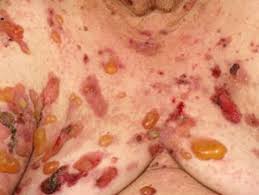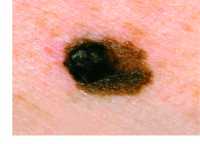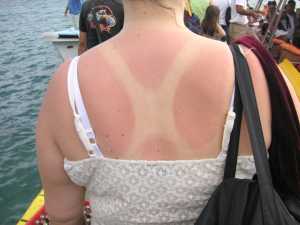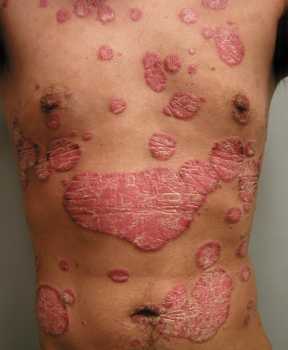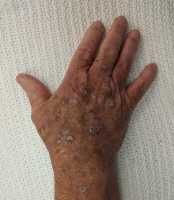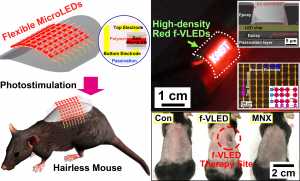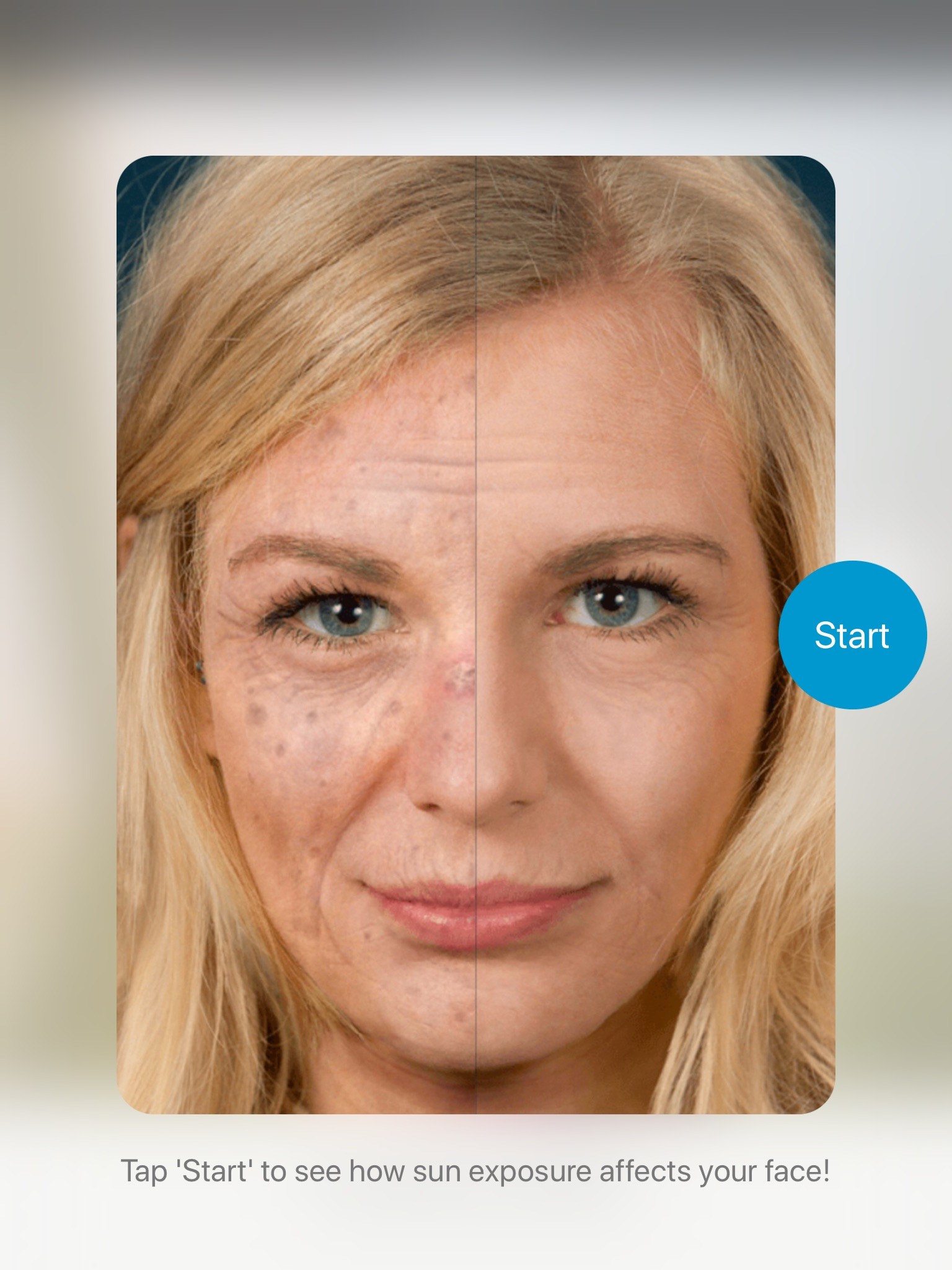Keloid status of an individual may be indicative of a risk to be diagnosed with early-onset, late staged breast cancer....
Increase Risk of Blistering Disorder with Diabetes Medication
Why Are There So Few Minority Dermatologists?
 Yssra S. Soliman, BA
Division of Dermatology, Department of Internal Medicine
Albert Einstein College of Medicine
Bronx, New York
MedicalResearch.com: What is the background for this study? What are the main findings?
Response: As the population of the United States becomes increasingly diverse, certain fields within medicine have not followed this trend. Dermatology is the least diverse field after orthopedics. We wanted to understand what barriers prevent medical students from applying to dermatology and whether these barriers differed based on students' racial, ethnic or socioeconomic backgrounds.
The main findings of this study are that certain groups are more likely to cite specific barriers than non-minority students. These barriers are significant deterrents to applying to dermatology and include the lack of diversity in dermatology, negative perceptions of minority students by residency programs, socioeconomic barriers such as lack of loan forgiveness and poor accessibility to mentors. (more…)
Yssra S. Soliman, BA
Division of Dermatology, Department of Internal Medicine
Albert Einstein College of Medicine
Bronx, New York
MedicalResearch.com: What is the background for this study? What are the main findings?
Response: As the population of the United States becomes increasingly diverse, certain fields within medicine have not followed this trend. Dermatology is the least diverse field after orthopedics. We wanted to understand what barriers prevent medical students from applying to dermatology and whether these barriers differed based on students' racial, ethnic or socioeconomic backgrounds.
The main findings of this study are that certain groups are more likely to cite specific barriers than non-minority students. These barriers are significant deterrents to applying to dermatology and include the lack of diversity in dermatology, negative perceptions of minority students by residency programs, socioeconomic barriers such as lack of loan forgiveness and poor accessibility to mentors. (more…)Scabies: For Community Control, Exam of Just Arms and Legs May Be Sufficient
Dapsone Found Effective As Second Line Treatment for Hives
Dermatologist Discusses Personalized Approach to Skin Cancer Treatment
MedicalResearch.comInterview with:
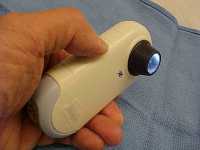
Jac Dinnes PhD, MSc, MA, PGDip
Senior Researcher
Test Evaluation Research Group
Institute of Applied Health Research
University of Birmingham
MedicalResearch.com: What is thebackground for this study? Would you briefly explain the benefits of dermoscopy?
Response: This systematic review was one of a series of Cochrane Reviews of studies evaluating different tests for diagnosing skin cancer. Within creasing rates of skin cancer and an increasing number of more specialised tests becoming available in both primary care and in specialist settings, a thorough review of all available evidence was timely.
The diagnosis of melanoma and other skin cancers fundamentally relies on clinical examination, including history taking, and visual inspection of the concerning skin lesion (mole or patch of skin) and surrounding skin (and other lesions). A dermatoscope is a handheld device using visible light (such as from incandescent or LED bulbs), that allows more detailed examination of the skin compared to examination by the naked eye alone.
Knowing the diagnostic accuracy of dermoscopy added to visual inspection alone, across a range of observers and settings, is critical to understanding its contribution for the diagnosis of melanoma and to future understanding of the potential role of the growing number of other high-resolution image analysis techniques.
(more…)Using of Big Data to Estimate Prevalence of Defective DNA Repair Variants in the US
MedicalResearch.com Interview with:

Kenneth H. Kraemer,M.D.
Chief DNA Repair Section
Laboratory of Cancer Biology and Genetics, Center for Cancer Research
National Cancer Institute
MedicalResearch.com: What is the background for this study?
Response: At the National Cancer Institute, we have been examining patients with xeroderma pigmentosum (XP), a rare, recessively inherited, cancer-prone disease for many years. Therefore, with the increasing use of exome sequencing, we decided to see how closely"big data" corresponded with our clinical observations.
(more…)
Machine Learning Program Superior to Humans in Non-Pigmented Skin Lesions
Novel Use of Tazarotene Gel To Treat Acne Scarring
Risk Factors for Melanoma in Women
Omalizumab (XOLAIR) For Chronic Hives (Urticaria)
Hot Sun Increases Absorption of Sunscreen Ingredients
 Audra Stinchcomb, PhD
Principal Investigator
Professor of Pharmaceutical Sciences
University of Maryland School of Pharmacy
MedicalResearch.com: What is the background for this study?
Response: We have been studying the heat effects and repeated dose effects on the absorption of drugs across the skin for more than 5 years. We were curious to see if the effects we saw on gel, cream, and ointment pharmaceuticals also occurred with sunscreen.
Sunscreens are typically used in the hot sun and with reapplication every 80 minutes or so, depending on the product and user.
(more…)
Audra Stinchcomb, PhD
Principal Investigator
Professor of Pharmaceutical Sciences
University of Maryland School of Pharmacy
MedicalResearch.com: What is the background for this study?
Response: We have been studying the heat effects and repeated dose effects on the absorption of drugs across the skin for more than 5 years. We were curious to see if the effects we saw on gel, cream, and ointment pharmaceuticals also occurred with sunscreen.
Sunscreens are typically used in the hot sun and with reapplication every 80 minutes or so, depending on the product and user.
(more…)Eczema Determined by Genetics or Environment?
What we see it that eczema is determined by genetics and with no know external factors causing or deteriorating the...
South Pacific Island Nation First Country to Ban Environmentally Harmful Sunscreens
 Ariel Kushmaro and Esti Kramarsky-Winter
Department of Biotechnology Engineering, Ben Gurion University
Beer Sheva, Israel
The Republic of Palau, a South Pacific island nation, became the world's first country to ban sunscreen products containing environmentally harmful ingredients
MedicalResearch.com: What is the background for this announcement? What are the main findings?
Response: Coral reefs are important ecosystems that are under threat due to global human driven climate change. In addition to global changes, local hazards such as point pollution by eutrophication, dredging and chemical pollution are exacerbating and promoting reef destruction at local levels. This destruction affects not only island nations that depend on these reefs for protection and livelihood, they affect humanity as a whole as they are an important source for food and novel drugs and new materials.
Our recent studies have shown that chemicals found in most commercial sunscreens and creams used to protect humans from deleterious effects of UV A and UVB wash off into the environment are persistent, have endocrine disruptive effects, and thus deleteriously affect marine organisms including corals. (more…)
Ariel Kushmaro and Esti Kramarsky-Winter
Department of Biotechnology Engineering, Ben Gurion University
Beer Sheva, Israel
The Republic of Palau, a South Pacific island nation, became the world's first country to ban sunscreen products containing environmentally harmful ingredients
MedicalResearch.com: What is the background for this announcement? What are the main findings?
Response: Coral reefs are important ecosystems that are under threat due to global human driven climate change. In addition to global changes, local hazards such as point pollution by eutrophication, dredging and chemical pollution are exacerbating and promoting reef destruction at local levels. This destruction affects not only island nations that depend on these reefs for protection and livelihood, they affect humanity as a whole as they are an important source for food and novel drugs and new materials.
Our recent studies have shown that chemicals found in most commercial sunscreens and creams used to protect humans from deleterious effects of UV A and UVB wash off into the environment are persistent, have endocrine disruptive effects, and thus deleteriously affect marine organisms including corals. (more…)What Can Be Done About Sundamaged Skin?
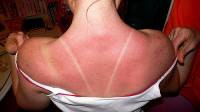 Sunburns are caused by UV damage from sun rays, almost entirely due to UVB rays. UVA rays are weaker for burning but can contribute to blistering sunburns as well. For example, If you get lime peel rubbed on your skin while you are in the sun, you could get a bad burn. UVA can also cause significant skin damage that can result in premature wrinkling, brown spots, and skin cancer. That's why you'll see dermatologists pushing for broad-spectrum sunscreens as opposed to sunscreens that just protect against UVB rays. (more…)
Sunburns are caused by UV damage from sun rays, almost entirely due to UVB rays. UVA rays are weaker for burning but can contribute to blistering sunburns as well. For example, If you get lime peel rubbed on your skin while you are in the sun, you could get a bad burn. UVA can also cause significant skin damage that can result in premature wrinkling, brown spots, and skin cancer. That's why you'll see dermatologists pushing for broad-spectrum sunscreens as opposed to sunscreens that just protect against UVB rays. (more…)Psoriasis Patients Have Higher Risk of Sexual and Erectile Dysfunction
There is a increasing scientific evidence supporting the relationship between psoriasis and sexual dysfunction. ...
Topical Minocycline Foam for Moderate-to-Severe Acne Meets Phase 3 Study Endpoints
 David Domzalski
CEO
Foamix Pharmaceuticals
MedicalResearch.com: What is the background for this study? How does FMX101 differ from other treatment for acne, ie benzoyl peroxide, topical clindamycin etc?
Response: This study measures the safety and efficacy of a topical foam formulation of the antibiotic minocycline, for the treatment of moderate-to-severe acne.
Minocycline is one of the most commonly used products for the treatment of acne, but is currently only available in an oral dosage form.
Significant side effects are associated with oral minocycline, including GI upset, photosensitivity, headaches, dizziness, and other potential effects on the CNS. In addition to the side effects associated with oral minocycline, many currently available topical acne medications contain ingredients which can be drying and irritating to the skin. These side effects can be frustrating to patients and potentially impact overall compliance to their treatment regimen. The study addresses important unmet needs in dermatology to determine whether providing patients with a topical dosage form of minocycline may have potential advantages over existing products.
In our first two Phase 3 clinical studies, >95% of facial local tolerability signs and symptoms were classified as “none” or “mild,” including dryness, erythema and itching. Also, our topical minocycline foam, FMX101, is a natural triglyceride-based vehicle that does not contain ingredients that serve as primary irritants or surfactants. We believe that FMX101, if approved, would be the first topical minocycline available for the treatment of acne and provide a novel and much needed treatment option for patients who suffer from the physical and psycho-social effects of acne. (more…)
David Domzalski
CEO
Foamix Pharmaceuticals
MedicalResearch.com: What is the background for this study? How does FMX101 differ from other treatment for acne, ie benzoyl peroxide, topical clindamycin etc?
Response: This study measures the safety and efficacy of a topical foam formulation of the antibiotic minocycline, for the treatment of moderate-to-severe acne.
Minocycline is one of the most commonly used products for the treatment of acne, but is currently only available in an oral dosage form.
Significant side effects are associated with oral minocycline, including GI upset, photosensitivity, headaches, dizziness, and other potential effects on the CNS. In addition to the side effects associated with oral minocycline, many currently available topical acne medications contain ingredients which can be drying and irritating to the skin. These side effects can be frustrating to patients and potentially impact overall compliance to their treatment regimen. The study addresses important unmet needs in dermatology to determine whether providing patients with a topical dosage form of minocycline may have potential advantages over existing products.
In our first two Phase 3 clinical studies, >95% of facial local tolerability signs and symptoms were classified as “none” or “mild,” including dryness, erythema and itching. Also, our topical minocycline foam, FMX101, is a natural triglyceride-based vehicle that does not contain ingredients that serve as primary irritants or surfactants. We believe that FMX101, if approved, would be the first topical minocycline available for the treatment of acne and provide a novel and much needed treatment option for patients who suffer from the physical and psycho-social effects of acne. (more…)Dermatology Care Varies Widely by Gender, Socioeconomic Factors and Race
IXORA-S Study Suggest Taltz May Provide Significantly Greater Clearance of Nail Psoriasis
Medicare Spends Hundreds of Millions Annually to Treat Precancerous Skin Lesions
 Howa Yeung, MD
Assistant Professor of Dermatology
Emory University School of Medicine
Atlanta, GA 30322
MedicalResearch.com: What is the background for this study? Would you briefly explain what is meant by actinic keratoses?
Response: Actinic keratoses are common precancerous skin lesions caused by sun exposure. Because actinic keratoses may develop into skin cancers such as squamous cell carcinoma and basal cell carcinoma, they are often treated by various destructive methods. We used Medicare Part B billing claims to estimate the number and cost of treated actinic keratoses from 2007 to 2015.
MedicalResearch.com: What are the main findings?
Response: While the number of Medicare Part B beneficiaries increased only moderately, the number of actinic keratoses treated by destruction rose from 29.7 million in 2007 to 35.6 million in 2015. Medicare paid an average annual amount of $413.1 million for actinic keratosis destruction from 2007 to 2015. Independently billing non-physician clinicians, including advanced practice registered nurses and physician assistants, are treating an increasing proportion of actinic keratosis, peaking at 13.5% in 2015.
MedicalResearch.com: What should readers take away from your report?
Response: Readers should understand that the burden of actinic keratosis treatment is increasing in the Medicare population. There is also an increasing proportion of actinic keratoses being treated by advanced practice registered nurses and physician assistants. (more…)
Howa Yeung, MD
Assistant Professor of Dermatology
Emory University School of Medicine
Atlanta, GA 30322
MedicalResearch.com: What is the background for this study? Would you briefly explain what is meant by actinic keratoses?
Response: Actinic keratoses are common precancerous skin lesions caused by sun exposure. Because actinic keratoses may develop into skin cancers such as squamous cell carcinoma and basal cell carcinoma, they are often treated by various destructive methods. We used Medicare Part B billing claims to estimate the number and cost of treated actinic keratoses from 2007 to 2015.
MedicalResearch.com: What are the main findings?
Response: While the number of Medicare Part B beneficiaries increased only moderately, the number of actinic keratoses treated by destruction rose from 29.7 million in 2007 to 35.6 million in 2015. Medicare paid an average annual amount of $413.1 million for actinic keratosis destruction from 2007 to 2015. Independently billing non-physician clinicians, including advanced practice registered nurses and physician assistants, are treating an increasing proportion of actinic keratosis, peaking at 13.5% in 2015.
MedicalResearch.com: What should readers take away from your report?
Response: Readers should understand that the burden of actinic keratosis treatment is increasing in the Medicare population. There is also an increasing proportion of actinic keratoses being treated by advanced practice registered nurses and physician assistants. (more…)Experimental Cap Regrows Hair Using Photostimulation
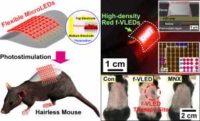 Han Eol Lee Ph.D.
Flexible and Nanobio Device Lab.
Department of Materials Science and Engineering
KAIST
MedicalResearch.com: What is the background for this study?
Response: Numerous people around the world have suffered from alopecia, which leads to aesthetic issues, low self-esteem, and social anxiety. With the population expansion alopecia patients from middle-age down even to the twenties, a depilation treatment is expected to have social and medical impacts on billions of patients. The causes of alopecia are generally known to be heredity, mental stress, aging, and elevated male hormone. Therapeutic techniques such as thermal, electrical, pharmacological, and optical stimulation have been proposed to treat hair problems. Among them, laser stimulation to hair-lost regions is a promising technique, activating the anagen phase and the proliferation of hair follicles without side effects. However, this laser stimulation technique has drawbacks, such as high power consumption, large size, and restrictive use in daily life (e.g., the difficulty of microscale spatial control and the long time exposure of high-energy laser). (more…)
Han Eol Lee Ph.D.
Flexible and Nanobio Device Lab.
Department of Materials Science and Engineering
KAIST
MedicalResearch.com: What is the background for this study?
Response: Numerous people around the world have suffered from alopecia, which leads to aesthetic issues, low self-esteem, and social anxiety. With the population expansion alopecia patients from middle-age down even to the twenties, a depilation treatment is expected to have social and medical impacts on billions of patients. The causes of alopecia are generally known to be heredity, mental stress, aging, and elevated male hormone. Therapeutic techniques such as thermal, electrical, pharmacological, and optical stimulation have been proposed to treat hair problems. Among them, laser stimulation to hair-lost regions is a promising technique, activating the anagen phase and the proliferation of hair follicles without side effects. However, this laser stimulation technique has drawbacks, such as high power consumption, large size, and restrictive use in daily life (e.g., the difficulty of microscale spatial control and the long time exposure of high-energy laser). (more…)Clothing Patterns of Boys Compared to Girls May Explain Differences in Patterns of Mole Development
Medical Residents and Program Directors Have Different Perceptions of New Parent Leave and Breastfeeding Policies
Genetics of Aggressive Skin Cancers in Patients with ‘Butterfly’ Skin Identified
Kids May One Day Be Vaccinated Against Acne Toxins
Patients with CLL Should Be Monitored for Skin Cancer, Including Melanoma
More Evidence UV Filters in Sunscreens Affect Marine Life
 Adela J. Li, PhD
Research Affiliate
Wadsworth Center, Rm. D597
New York State Dept. of Health
Empire State Plaza
Albany, NY, 12201-0509
On the behalf of Dr. Kelvin Leung
MedicalResearch.com: What is the background for this study? What are the main findings?
Response: Most people love the beach. In order to block the sun’s damaging UV radiation, people generally slather on a thick layer of sunscreen against sunburn and skin cancer. Sunscreen is suggested to be re-applied every few hours regarding its effectiveness as well as being washed off into the water. These UV filters have been detected in the environment but most studies concluded that individual sunscreen chemicals pose no/low risk to animals or human. However, UV filters constitute a heterogeneous group of chemicals in sunscreens. We are wondering if combination of UV filters would induce higher toxicity than individual compounds, and whether these chemical interactions would develop over time, becoming increasingly dangerous to the living systems.
Our study found seven of the nine UV filters in Shenzhen waters, China --- a rapidly urbanized city with over 20 popular recreational beaches, surprisingly, a reservoir and tap water. After exposing artemia to three dominant UV filters and then feeding these artemia to zebrafish adults, concentrations in both were up to 4 times higher when exposed to the mixtures than when exposed to only a single UV filter. A short-term of 25-day dietary exposure to the zebrafish adults did not appear to significantly influence early life stage development of the second generation; however, relatively long exposure over 47 days had significant adverse effects on embryo development. (more…)
Adela J. Li, PhD
Research Affiliate
Wadsworth Center, Rm. D597
New York State Dept. of Health
Empire State Plaza
Albany, NY, 12201-0509
On the behalf of Dr. Kelvin Leung
MedicalResearch.com: What is the background for this study? What are the main findings?
Response: Most people love the beach. In order to block the sun’s damaging UV radiation, people generally slather on a thick layer of sunscreen against sunburn and skin cancer. Sunscreen is suggested to be re-applied every few hours regarding its effectiveness as well as being washed off into the water. These UV filters have been detected in the environment but most studies concluded that individual sunscreen chemicals pose no/low risk to animals or human. However, UV filters constitute a heterogeneous group of chemicals in sunscreens. We are wondering if combination of UV filters would induce higher toxicity than individual compounds, and whether these chemical interactions would develop over time, becoming increasingly dangerous to the living systems.
Our study found seven of the nine UV filters in Shenzhen waters, China --- a rapidly urbanized city with over 20 popular recreational beaches, surprisingly, a reservoir and tap water. After exposing artemia to three dominant UV filters and then feeding these artemia to zebrafish adults, concentrations in both were up to 4 times higher when exposed to the mixtures than when exposed to only a single UV filter. A short-term of 25-day dietary exposure to the zebrafish adults did not appear to significantly influence early life stage development of the second generation; however, relatively long exposure over 47 days had significant adverse effects on embryo development. (more…)Waiting Room App Uses Selfies To Show Patients Effects of Sun Damage
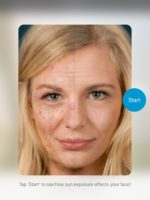 Dr. med. Titus Brinker
Head of App-Development // Clinician Scientist
Department of Translational Oncology
National Center for Tumor Diseases (NCT)
Department of Dermatology
University Hospital Heidelberg
Heidelberg
MedicalResearch.com: What is the background for this study? What are the main findings?
Response: While everyone in the dermatologic community appears to agree on the importance of UV-protection for skin cancer prevention, busy clinicians often lack time to address it with their patients.
Thus, the aim of this study was to make use of waiting rooms that almost every patient visiting a clinic spends time in and address this topic in this setting by the means of modern technology rather than clinicians time.
We used our free photoaging app "Sunface" which shows the consequences of bad UV protection vs. good UV protection on the users' own 3D-animated selfie 5 to 25 years in the future and installed it on an iPad. The iPad was then centrally placed into the waiting room of our outpatient clinic on a table and had the Sunface App running permanently. The mirroring of the screen lead to a setting where every patient in the waiting room would see and eventually react to the selfie taken by one individual patient which was altered by the Sunface App.
Thus, the intervention was able to reach a large proportion of patients visiting our clinic: 165 (60.7%) of the 272 patients visiting our waiting room in the seven days the intervention was implemented either tried it themselves (119/72,12%) or watched another patient try the app (46/27,9%) even though our outpatient clinic is well organized and patients have to wait less than 20 minutes on average. Longer waiting times should yield more exposure to the intervention. Of the 119 patients who tried the app, 105 (88.2%) indicated that the intervention motivated them to increase their sun protection (74 of 83 men [89.2%]; 31 of 34 women [91.2%]) and to avoid indoor tanning beds (73 men [87.9%]; 31 women [91.2%]) and that the intervention was perceived as fun (83 men [98.8%]; 34 women [97.1%]).
(more…)
Dr. med. Titus Brinker
Head of App-Development // Clinician Scientist
Department of Translational Oncology
National Center for Tumor Diseases (NCT)
Department of Dermatology
University Hospital Heidelberg
Heidelberg
MedicalResearch.com: What is the background for this study? What are the main findings?
Response: While everyone in the dermatologic community appears to agree on the importance of UV-protection for skin cancer prevention, busy clinicians often lack time to address it with their patients.
Thus, the aim of this study was to make use of waiting rooms that almost every patient visiting a clinic spends time in and address this topic in this setting by the means of modern technology rather than clinicians time.
We used our free photoaging app "Sunface" which shows the consequences of bad UV protection vs. good UV protection on the users' own 3D-animated selfie 5 to 25 years in the future and installed it on an iPad. The iPad was then centrally placed into the waiting room of our outpatient clinic on a table and had the Sunface App running permanently. The mirroring of the screen lead to a setting where every patient in the waiting room would see and eventually react to the selfie taken by one individual patient which was altered by the Sunface App.
Thus, the intervention was able to reach a large proportion of patients visiting our clinic: 165 (60.7%) of the 272 patients visiting our waiting room in the seven days the intervention was implemented either tried it themselves (119/72,12%) or watched another patient try the app (46/27,9%) even though our outpatient clinic is well organized and patients have to wait less than 20 minutes on average. Longer waiting times should yield more exposure to the intervention. Of the 119 patients who tried the app, 105 (88.2%) indicated that the intervention motivated them to increase their sun protection (74 of 83 men [89.2%]; 31 of 34 women [91.2%]) and to avoid indoor tanning beds (73 men [87.9%]; 31 women [91.2%]) and that the intervention was perceived as fun (83 men [98.8%]; 34 women [97.1%]).
(more…)


